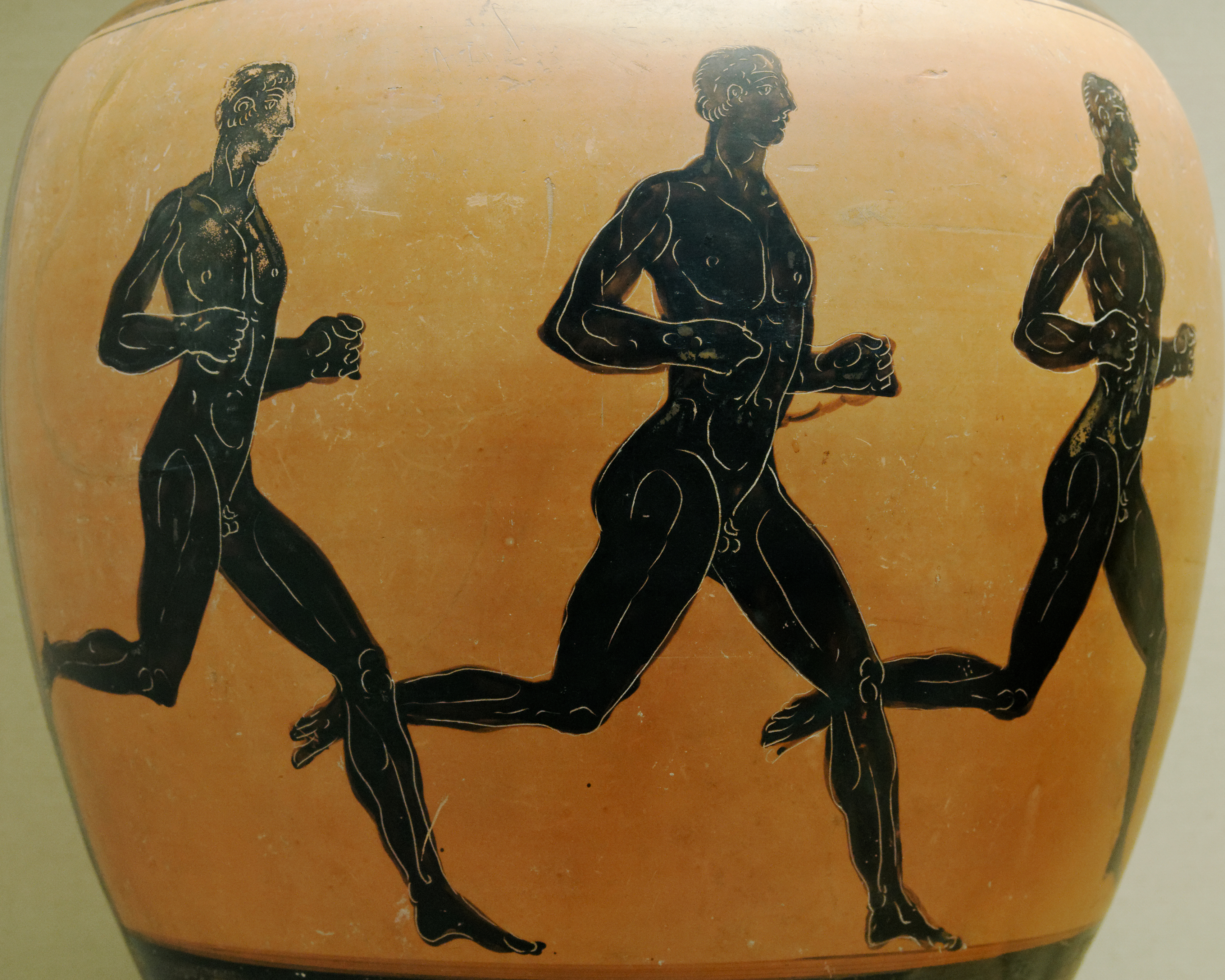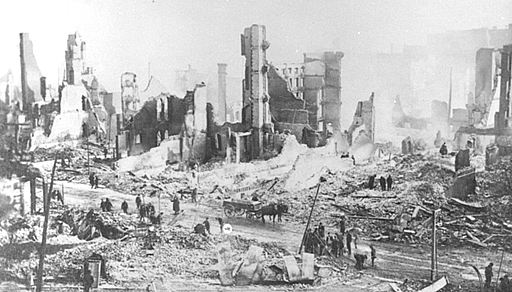|
Chūhei Nambu
was a Japanese track and field athlete. , he is the only person to have held world records in both the long jump and the triple jump. Biography The first results known for Nambu are from the mid-1920s. He was a member of the Japanese Olympic team at the 1928 Summer Olympics in Amsterdam, where he competed in three events. His best performance came in the triple jump, where he placed fourth, while his countryman Mikio Oda won the gold. In the long jump, he finished ninth, and his 4 × 100 m relay team was eliminated in the heats. Nambu's real breakthrough came in 1931. After improving his Japanese record a few times, he landed a long jump just two cm short of 8 m, a new world record. Jesse Owens broke the world record less than four years later but it stood as an Asian record until it was beaten by Hiroomi Yamada in 1970. The next year, at the Los Angeles Games, he was one of the favourites for the Olympic titles in both horizontal jumps. Nambu was disappointed with his th ... [...More Info...] [...Related Items...] OR: [Wikipedia] [Google] [Baidu] |
Sapporo
is a Cities designated by government ordinance of Japan, designated city in Hokkaido, Japan. Located in the southwest of Hokkaido, it lies within the alluvial fan of the Toyohira River, a tributary of the Ishikari River. Sapporo is the capital of Hokkaido Prefecture and Ishikari Subprefecture. As of July 31, 2023, the city has a population of 1,959,750, making it the largest city in Hokkaido and the largest north of Tokyo. It is the List of cities in Japan, fifth-most populous city in Japan and is Hokkaido's cultural, economic, and political center. Originally a plain sparsely inhabited by the indigenous Ainu people, there were a few trade posts of the Matsumae clan, Matsumae domain in the area during the Edo period. The city began as an administrative centre with the establishment of the Hokkaidō Development Commission, Hokkaido Development Commission headquarters in 1869. Inspired by the ancient cities of Kyoto and Heijō-kyō, it adopted a grid plan and developed around Odo ... [...More Info...] [...Related Items...] OR: [Wikipedia] [Google] [Baidu] |
Jack Metcalfe
John Patrick Metcalfe (3 February 1912 – 16 January 1994) was an Australian athlete who competed in high jump, long jump and javelin events, though he is best remembered as a triple jumper.Jack Metcalfe . sports-reference.com Biography Metcalfe was educated at and competed for Athletics Club. At the 1934 Empire Games, Metcalfe won the triple jump and took a bronze medal in ...[...More Info...] [...Related Items...] OR: [Wikipedia] [Google] [Baidu] |
Japanese Male Long Jumpers
Japanese may refer to: * Something from or related to Japan, an island country in East Asia * Japanese language, spoken mainly in Japan * Japanese people, the ethnic group that identifies with Japan through ancestry or culture ** Japanese diaspora, Japanese emigrants and their descendants around the world * Japanese citizens, nationals of Japan under Japanese nationality law ** Foreign-born Japanese, naturalized citizens of Japan * Japanese writing system, consisting of kanji and kana * Japanese cuisine, the food and food culture of Japan See also * List of Japanese people * * Japonica (other) * Japanese studies , sometimes known as Japanology in Europe, is a sub-field of area studies or East Asian studies involved in social sciences and humanities research on Japan. It incorporates fields such as the study of Japanese language, history, culture, litera ... {{disambiguation Language and nationality disambiguation pages ... [...More Info...] [...Related Items...] OR: [Wikipedia] [Google] [Baidu] |
Athletes From Hokkaido
An athlete is most commonly a person who competes in one or more sports involving physical strength, speed, power, or endurance. Sometimes, the word "athlete" is used to refer specifically to sport of athletics competitors, i.e. including track and field and marathon runners but excluding e.g. swimmers, footballers or basketball players. However, in other contexts (mainly in the United States) it is used to refer to all athletics (physical culture) participants of any sport. For the latter definition, the word sportsperson or the gendered sportsman or sportswoman are also used. A third definition is also sometimes used, meaning anyone who is physically fit regardless of whether they compete in a sport. Athletes may be professionals or amateurs. Most professional athletes have particularly well-developed physiques obtained by extensive physical training and strict exercise, accompanied by a strict dietary regimen. Definitions The word "athlete" is a romanization of the , ''at ... [...More Info...] [...Related Items...] OR: [Wikipedia] [Google] [Baidu] |
1997 Deaths
This is a list of lists of deaths of notable people, organized by year. New deaths articles are added to their respective month (e.g., Deaths in ) and then linked below. 2025 2024 2023 2022 2021 2020 2019 2018 2017 2016 2015 2014 2013 2012 2011 2010 2009 2008 2007 2006 2005 2004 2003 2002 2001 2000 1999 1998 1997 1996 1995 1994 1993 1992 1991 1990 1989 1988 1987 1986 Earlier years ''Deaths in years earlier than this can usually be found in the main articles of the years.'' See also * Lists of deaths by day * Deaths by year (category) {{DEFAULTSORT:deaths by year ... [...More Info...] [...Related Items...] OR: [Wikipedia] [Google] [Baidu] |
1904 Births
Events January * January 7 – The distress signal ''CQD'' is established, only to be replaced 2 years later by ''SOS''. * January 8 – The Blackstone Library is dedicated, marking the beginning of the Chicago Public Library system. * January 12 – The Herero Wars in German South West Africa begin. * January 17 – Anton Chekhov's last play, ''The Cherry Orchard'' («Вишнëвый сад», ''Vishnevyi sad''), opens at the Moscow Art Theatre directed by Constantin Stanislavski, 6 month's before the author's death. * January 23 – The Ålesund fire destroys most buildings in the town of Ålesund, Norway, leaving about 10,000 people without shelter. * January 25 – Halford Mackinder presents a paper on "The Geographical Pivot of History" to the Royal Geographical Society of London in which he formulates the Heartland Theory, originating the study of geopolitics. February * February 7 – The Great Baltimore Fire in Baltimore, Maryland, destroys over 1,500 build ... [...More Info...] [...Related Items...] OR: [Wikipedia] [Google] [Baidu] |
World Record Progression Triple Jump
The following table shows the world record progression in the men's and women's triple jump, officially ratified by the IAAF. Men The first world record in the men's triple jump was recognized by the International Association of Athletics Federations in 1912. That inaugural record was the 15.52 m performance by Dan Ahearn in 1911. As of June 21, 2009, 27 world records have been ratified by the IAAF in the event. The men's triple jump world record is unusual in that on five occasions a new record has been set and then broken again on the same day. Women The first world record in the women's triple jump was recognised by the International Association of Athletics Federations in 1990. As of June 21, 2009, the IAAF has ratified 5 world records in the event. Unofficial pre-IAAF progression to 1990 Official IAAF progression from 1990 Women's triple jump progression controversy Inessa Kravets was found guilty of doping offenses in 1993, after her 1991 record and before ... [...More Info...] [...Related Items...] OR: [Wikipedia] [Google] [Baidu] |
Pneumonia
Pneumonia is an Inflammation, inflammatory condition of the lung primarily affecting the small air sacs known as Pulmonary alveolus, alveoli. Symptoms typically include some combination of Cough#Classification, productive or dry cough, chest pain, fever, and Shortness of breath, difficulty breathing. The severity of the condition is variable. Pneumonia is usually caused by infection with viruses or bacteria, and less commonly by other microorganisms. Identifying the responsible pathogen can be difficult. Diagnosis is often based on symptoms and physical examination. Chest X-rays, blood tests, and Microbiological culture, culture of the sputum may help confirm the diagnosis. The disease may be classified by where it was acquired, such as community- or hospital-acquired or healthcare-associated pneumonia. Risk factors for pneumonia include cystic fibrosis, chronic obstructive pulmonary disease (COPD), sickle cell disease, asthma, diabetes, heart failure, a history of smoking, ... [...More Info...] [...Related Items...] OR: [Wikipedia] [Google] [Baidu] |
International Olympic Committee
The International Olympic Committee (IOC; , CIO) is the international, non-governmental, sports governing body of the modern Olympic Games. Founded in 1894 by Pierre de Coubertin and Demetrios Vikelas, it is based in Lausanne, Switzerland. The IOC is the authority responsible for organizing the Summer, Winter, and Youth Olympics. The IOC is also the governing body of the National Olympic Committees (NOCs) and the worldwide Olympic Movement, which includes all entities and individuals involved in the Olympic Games. , 206 NOCs officially were recognized by the IOC. Since 2013, the IOC president has been Thomas Bach; he will be succeeded by Kirsty Coventry in June 2025. Mission Its stated mission is to promote Olympism throughout the world and to lead the Olympic Movement: *To encourage and support the promotion of ethics and good governance in sport; *To support the education of youth through sport; *To ensure that the spirit of fair play ... [...More Info...] [...Related Items...] OR: [Wikipedia] [Google] [Baidu] |
Olympic Order
The Olympic Order, established in 1975, is the highest award of the Olympic Movement. It is awarded for particularly distinguished contributions to the Olympic Movement, i.e. recognition of efforts worthy of merit in the cause of sport. Traditionally, the IOC bestows the Olympic Order upon the chief national organiser(s) at the closing ceremony of each respective Olympic Games. History The Olympic Order was established in May 1975 by the International Olympic Committee as a successor to the Olympic Diploma of Merit. The Olympic Order originally had three grades (gold, silver and bronze). In 1984, at the 87th IOC Session in Sarajevo (Yugoslavia), it was decided that there would be no distinction between the silver and bronze order. Design The insignia of the Olympic Order is in the form of a ''collar'' (or chain), in Gold, Silver or Bronze according to grade; the front of the chain depicts the five rings of the Olympic Movement, flanked on either side by ''kotinos'' emblem ( ... [...More Info...] [...Related Items...] OR: [Wikipedia] [Google] [Baidu] |





